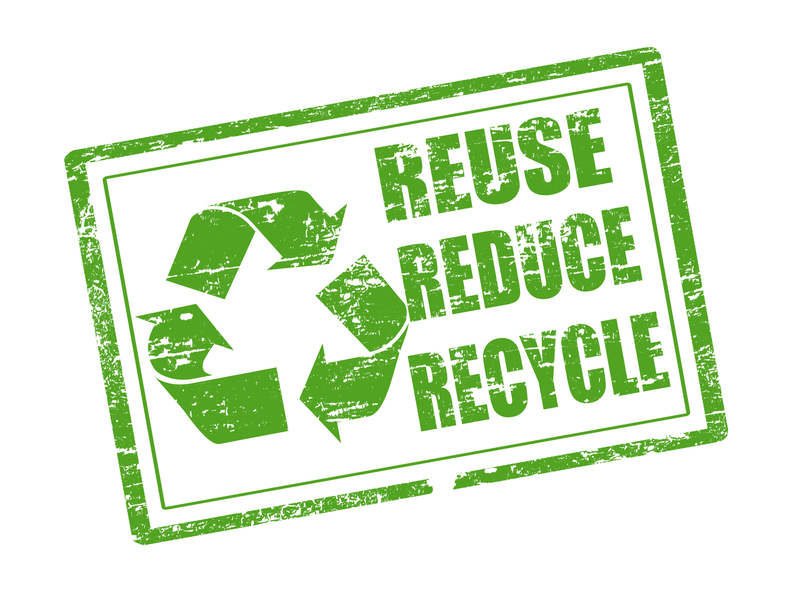A Guide to Environmentally Friendly Pots and Pans Recycling
Are you wondering what to do with your old cookware? Improper disposal of household items like pots and pans can contribute significantly to environmental pollution. Recycling pots and pans responsibly isn't always as straightforward as popping them into a recycling bin. This comprehensive guide offers everything you need to know about eco-friendly pots and pans recycling. From understanding recycling processes to discovering creative reuse ideas, let's explore how you can give your cookware a second life and help the planet.
Why Is Environmentally Friendly Pots and Pans Recycling Important?
Old or damaged cookware, when tossed in landfills, can take decades or even centuries to decompose, especially those made from metals, non-stick coatings, and synthetic handles. Environmentally responsible recycling not only reduces landfill waste but also allows the valuable materials in your old cookware to be reused. This process conserves resources and limits the need for new mining or manufacturing.
Key Benefits of Eco-Friendly Cookware Disposal
- Reduces Environmental Impact: Keeps metals and chemicals out of landfills, protecting soil and water.
- Conserves Raw Materials: Metal and glass from recycled pots and pans can be reused to manufacture new products.
- Saves Energy: Recycling metals, like aluminum or steel, uses significantly less energy than producing them from raw ore.
- Supports Circular Economy: Promotes a system where products and materials are reused and recycled continually.

Types of Pots and Pans: Know What You Have
Different types of cookware require different recycling approaches. Take a close look at your pots and pans to identify their material. This information will guide your recycling or repurposing options.
Common Cookware Materials
- Aluminum: Lightweight, often used for frying pans and saucepans.
- Stainless Steel: Durable, corrosion-resistant, commonly used in both home and professional kitchens.
- Cast Iron: Heavy-duty, long-lasting, sometimes enamel-coated.
- Copper: Excellent heat conductor, usually lined with another metal.
- Non-Stick Pans: Typically aluminum or steel coated with Teflon or ceramic materials.
- Glass Cookware: Often used for baking dishes or specialty pots.
- Ceramic and Porcelain: Decorative and functional, used for both oven and stovetop cooking.
Each material demands specific recycling protocols, so proper identification is essential for eco-friendly disposal.
How to Recycle Pots and Pans Responsibly
Before tossing your unused or broken cookware, follow these steps to ensure it's handled in an environmentally conscious way:
1. Assess the Condition of Your Pots and Pans
- Reusable Condition: If your cookware is still usable, consider donation or resale--these are always greener choices.
- Non-Functional or Damaged: If broken or warped, focus on recycling or upcycling them.
2. Remove Non-Metal Components
Most recycling centers prefer pure metal. Remove plastic, rubber, wooden handles, or glass lids before recycling. These materials may be recycled separately or must be disposed of according to your local guidelines.
3. Find a Suitable Recycling Facility
Not every curbside bin will accept cookware. Consider these options:
- Scrap Metal Yards: Most accept metal pots and pans, regardless of condition. Make sure you separate different metals if required.
- Community Recycling Events: Some local governments organize events for hard-to-recycle items.
- Manufacturer Take-back Programs: Check if the cookware company offers a recycling or trade-in scheme. Some brands provide incentives!
- Special Waste Collection Centers: Contact your city's public works or recycling department for advice.
4. Donation and Reuse
If your pots and pans are in good shape, offer them to local charities, thrift stores, women's shelters, or community kitchens. This is the most eco-friendly cookware recycling option as it extends the product's useful life and supports your community.
Best Practices for Recycling Different Types of Cookware
Stainless Steel and Aluminum Pots and Pans
- Pure Metal Cookware: Bring to a scrap metal dealer. These metals are highly recyclable.
- Check for Coatings: Remove any rubber or plastic parts and clean the surface if possible.
- Recycling Code: Aluminum is usually marked with the number "41" recycling code--check underneath your pan.
Cast Iron Pans
- Exceptionally Durable: Even the most rusted or damaged pans can be melted down and recycled with other scrap iron.
- Alternate Uses: Re-season for use as planters, weighs, or even rustic decor.
Non-Stick Cookware
- Complex to Recycle: Non-stick coatings (like Teflon) present recycling challenges. Many scrap yards require you to remove the coating.
- Ceramic-Coated Options: These are more likely to be accepted by recyclers than Teflon-coated pans.
- Check with Manufacturer: Some companies offer take-back services for non-stick pans.
Copper Cookware
- Valuable Metal: Most scrap yards pay well for copper. If your pan contains a different lining (such as tin), mention this to your recycler.
- Polish and Donate: If in decent condition, many people collect antique copper pieces.
Glass and Ceramic Pots
- Not Usually Curbside: Most municipal recycling programs do not accept tempered glass or ceramics. Never place these in glass recycling bins unless specifically stated.
- Reuse for Storage: Repurpose as bakeware, storage, flower pots, or garden ornaments.
Porcelain and Enamel-Coated Pieces
- Mixed Materials: Enamel is fused to metal, making recycling more difficult. Check with specialized scrap dealers or reuse creatively.
Creative and Sustainable Ways to Repurpose Old Cookware
If recycling isn't an option, don't throw your cookware away just yet! Upcycling is a fun, eco-friendly way to give old pots and pans new life. Here are a few unique ideas:
- Planters and Garden Decor: Use deep pots and pans as quirky plant containers or herb gardens.
- Bird Baths and Feeders: Large stainless steel pans make excellent backyard bird baths or feeders.
- Wall Art and Clocks: Create rustic kitchen wall art or fashion an old pan into a unique clock.
- Candle Holders: Small pots can be filled with wax and wicks for homemade candles.
- Storage Solutions: Use pans as organizers for tools, pens, craft items, or even bathroom supplies.
- Children's Play Items: Turn colorful pans into musical instruments or sandpit toys for kids.
Tips for Buying Environmentally Friendly Cookware
Prevention is always better than cure. Choosing sustainable cookware means you'll replace items less often, and future recycling will be much simpler. Here are tips for eco-conscious buyers:
- Opt for High-Quality, Durable Brands: Invest in cookware known for longevity.
- Choose Recyclable Materials: Stainless steel, cast iron, and plain aluminum are easiest to recycle.
- Minimize Non-Stick and Plastic: These present the biggest recycling challenges.
- Look for Take-back or Repair Programs: Support companies that will help you recycle or refurbish your cookware.
- Consider Second-Hand or Restored Pieces: Buying used is the ultimate green choice!

Frequently Asked Questions About Pots and Pans Recycling
Can I Put Pots and Pans in My Household Recycling Bin?
Usually not. Most curbside recycling programs do not handle cookware due to size, shape, and material complexities. Take them to a scrap metal facility or recycling event instead.
What Should I Do With Non-Stick Pans?
Non-stick pans are tricky. If the coating is peeling or scratched, they often can't be recycled via regular means. Contact the manufacturer or look for specialized recycling centers. Always remove handles and as many additional pieces as possible.
How Should I Prepare Pots and Pans for Recycling?
Wash and dry thoroughly, remove non-metal parts, and sort by material (aluminum, stainless steel, etc.) if requested by your recycler.
Where Can I Donate Usable Cookware?
- Thrift stores (Goodwill, Salvation Army)
- Community kitchens and nonprofits
- Charities supporting families or refugees
- Online neighborhood groups (Freecycle, Facebook Marketplace)
Conclusion: Make Pots and Pans Recycling Part of Your Green Lifestyle
Taking the time to recycle your pots and pans in an eco-friendly way shows you care for the planet as well as your community. By following the tips and guidelines in this guide, you'll keep valuable materials in use, reduce environmental impact, and inspire others to do the same. Even small actions, like proper disposal or creative upcycling, contribute to a healthier, more sustainable world.
Remember: Every pot and pan recycled is one step closer to a greener future!
- Identify your cookware materials
- Seek local recycling or donation options
- Repurpose creatively when possible
- Shop for eco-friendly cookware in the future
Share this guide with friends and family to spread the word about environmentally friendly pots and pans recycling. Together, we can make every kitchen a part of the sustainability movement!